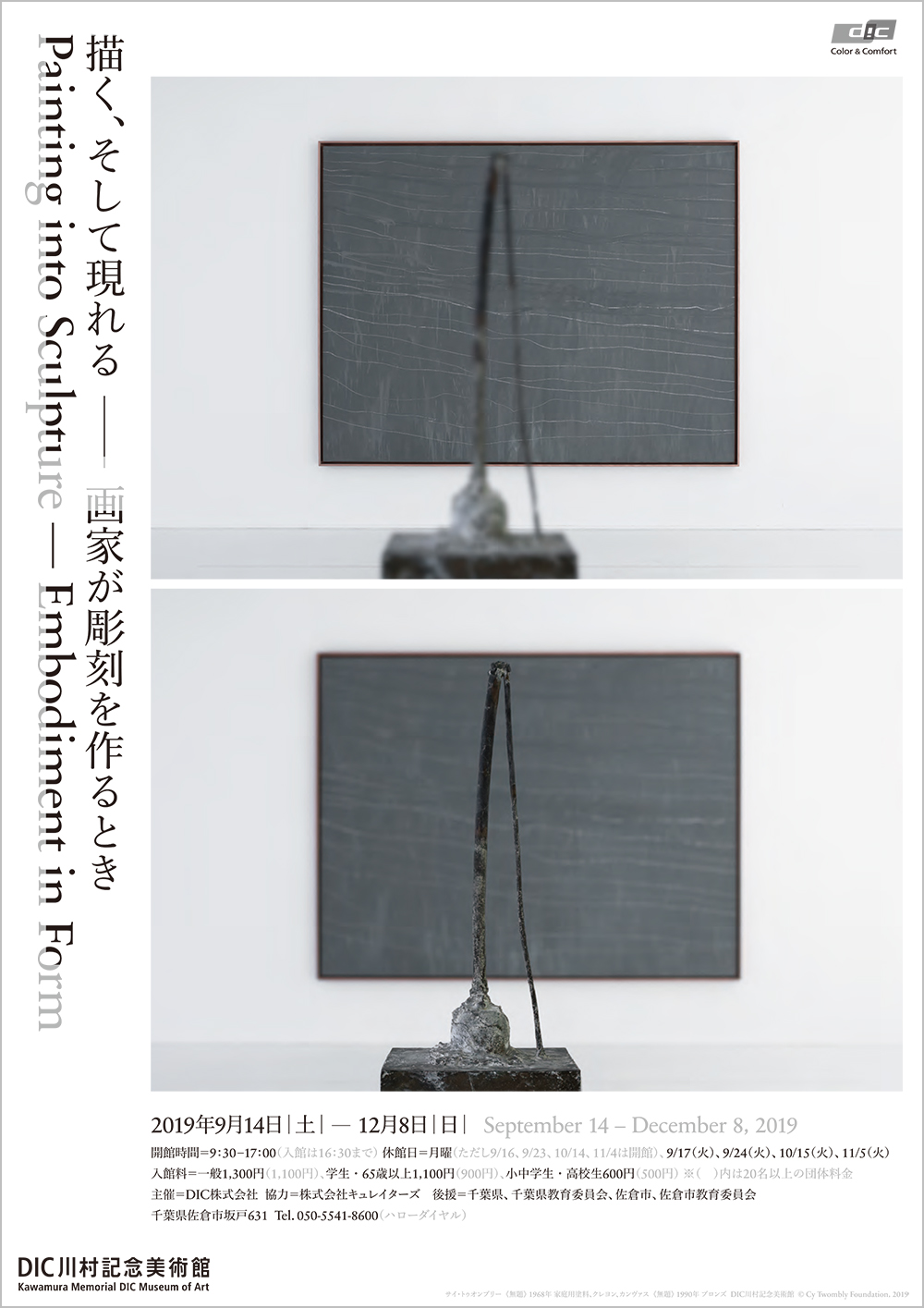Painting into Sculpture
Embodiment in Form
September 14 - December 8, 2019
- Hours:
- 9:30-17:00 (last admission 16:30)
- Closed:
- Mondays (except Sep. 16, Sep.23, Oct. 14, Nov. 4) , Sep. 17, Sep. 24, Oct. 15, Nov. 5
- Organizer:
- DIC Corporation
- Patrons:
- Chiba Prefecture, Chiba Prefectural Board of Education, Sakura City, Sakura City Board of Education
Museum Admission
- Adults ¥1,300
- College / 65 and over ¥1,100
- Elem / JH / HS ¥600
Groups of 20 or more:
- Adults ¥1,100
- College / 65 and over ¥900
- Elem / JH / HS ¥500
Persons with a disability pass:
- Adults ¥1,000
- College / 65 and over ¥800
- Elem / JH / HS ¥400
*Admission also includes entrance to the permanent collection galleries.
- For students and seniors over 65, discounts require identification such as a Student ID, passport or driver's license.
- For persons with a disability pass=the same discounted price applies for one accompanying care-giver for each disability pass holder
Outline
Is it an unusual thing for painters to create sculpture as well?
Looking back into history, the famed writer on Renaissance art, Giorgio Vasari, writes in his authoritative book Lives of the Artists that the Renaissance master Leonardo da Vinci and his mentor Andrea del Verrocchio were among many artists who were both painters and sculptors. This said, however, as artists of later generations became increasingly specialized, we see that while sculptors, who were generally prolific in the use of sketching in their art, would at times also do paintings or etchings, but it became increasingly rare for painters to devote serious artistic efforts to creating works of sculpture.
Entering the modern era, we know that a number of Impressionist painters also created outstanding works of sculpture. Among these were Edgar Degas and Pierre-Auguste Renoir, and among their contemporaries who also devoted themselves passionately to the creation of sculpture was Honore Daumier. Their work in sculpture was primarily a process of giving three-dimensional form to the figures that appeared in their paintings. Paul Gauguin also created notable works of sculpture based on his study of the folk art of Tahiti.
Then in the 20th century, avant-garde artist undertook new experiments with form in their paintings and then tried to give three-dimensional form to them. Why was it that they then went beyond the new freedom they had found in painting to trade their brushes for tools and chose new materials to enter the world of gravity and create sculptures? What is the connection between their paintings and the sculptures they gave birth to. Certainly their creations were not simply the work of amateur sculptors.
In this exhibition, we are proud to present a selection of sculptures by avant-garde artists of the 20th century that emerged from their paintings. But showing their paintings along with their subsequent sculptures, we hope to reveal their artistic intentions in a new light.
*Some works will be rotated in and out during the exhibition.
Programs
Details and information about how to make reservations are provided on the Japanese webpage.
Talk Events by Guest Speakers (reservations required)
1.Masato Kobayashi (Painter) and Yoshitomo Nara (Painter, sculptor)
“Leaving and Going Beyond the Wooden Frame Because We are Painters”
October 12 (Sat.)
2.Yurie Nagashima (Photographer, writer) and Takashi Ishida (Painter, video artist)
“To Shoot and See New Images Appear – Into Spaces”
November 16 (Sat.)
Gallery Talks by the Curator
Saturday, September 14, 14:00-15:00
Saturday, November 30, 14:00-15:00
- No reservations required
- Gather at the Entrance Hall 14:00
- Free with Museum admission
Guided Tours
Daily (except Sep. 14, Nov. 30), 14:00-15:00
- No reservations required
- Gather at the Entrance Hall 14:00
- Free with Museum admission
Museum Concert (reservations required)
Shuta Hasunuma (Musician, artist)
Saturday, October 26, 18:00 Start
- Reservations required. See Japanese page for details.
